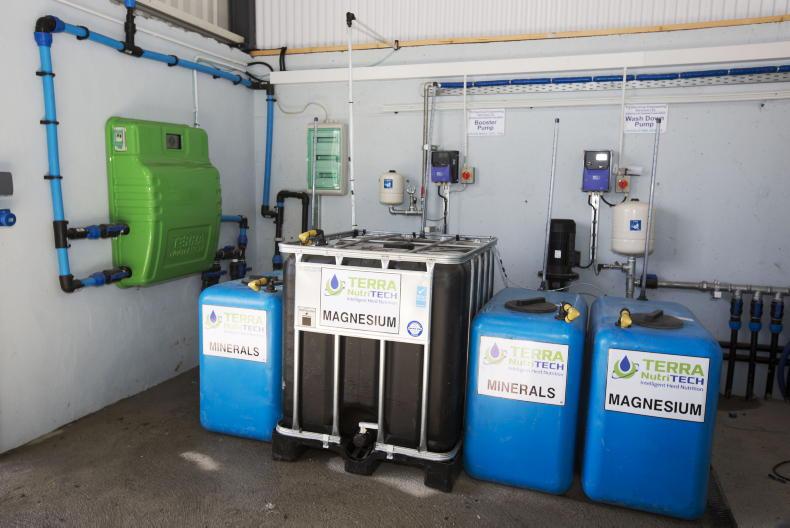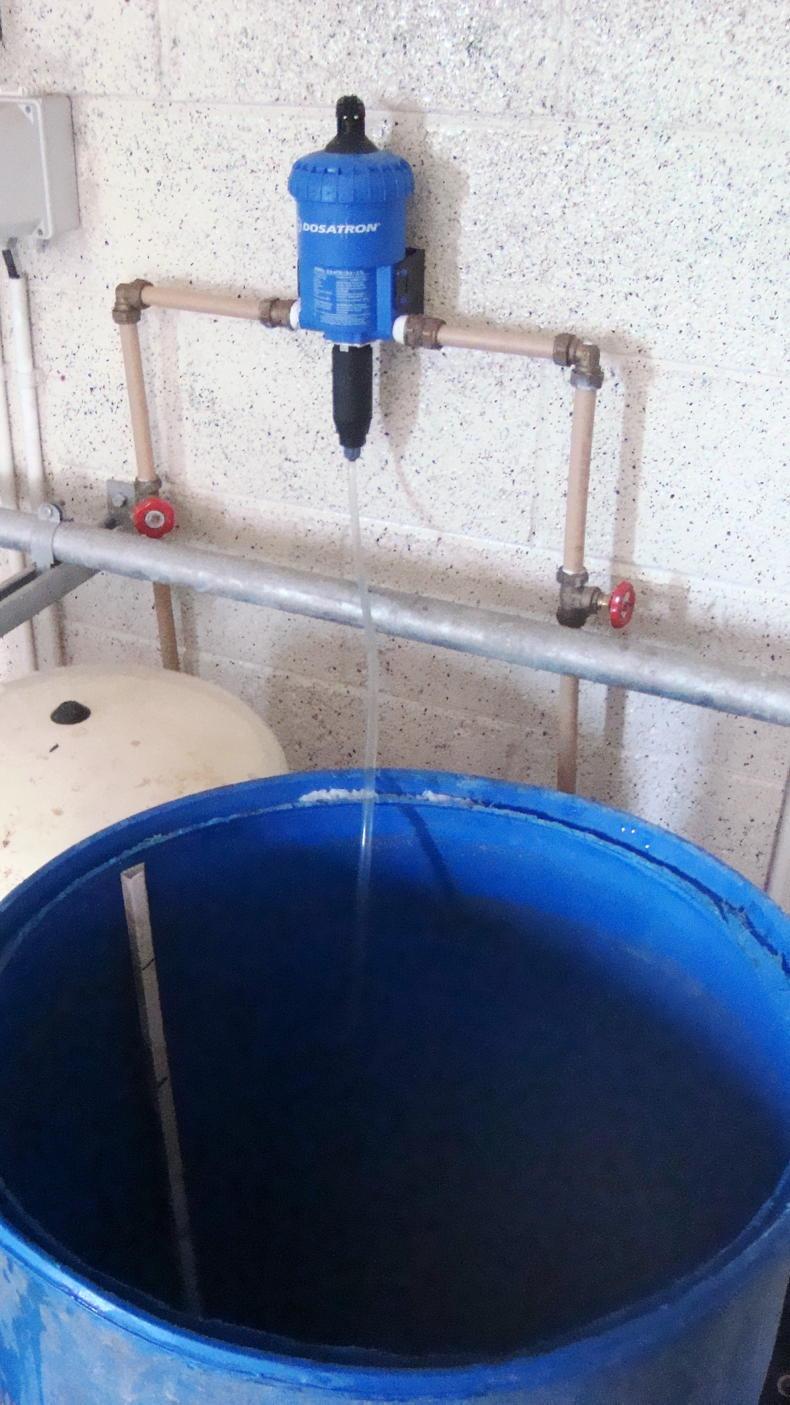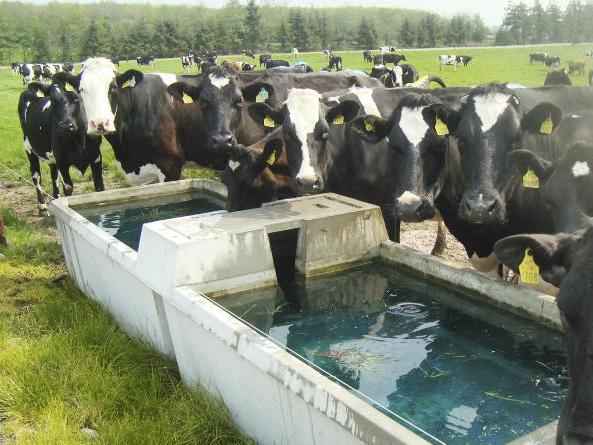Supplementary minerals for cows and cattle can be a very easy sell. We all know that animals need minerals for normal healthy function – it’s a well-proven fact.
Animals that are deficient in some minerals will have poor thrive, poor production and poor fertility.
There is also a strong placebo effect associated with minerals – farmers feel good after giving animals extra minerals because they feel they are helping the animal and the extra minerals will pay for themselves with improved production and fertility.
The question I have is are supplementary minerals needed and if so, what are the methods of administering them?
Are they needed?
The primary source of minerals and vitamins for Irish dairy cows is through the feed – grass and concentrates. The purpose of supplementary minerals is to complement what the animal is getting in the feed. In order to know how much extra minerals they need, you need to know what is being provided in the grass and meal.
Unlike silage or meal, the mineral profile of grazed grass is much more variable as it changes from paddock to paddock and it also changes at different times of the year.
Another issue is that some soils are deficient or have excess of certain minerals
Generally speaking, the mineral composition of grass is highest when it is growing the slowest and vice versa. So during the breeding season, when grass is growing at its fastest, it’s likely to have the lowest mineral composition.
Another issue is that some soils are deficient or have excess of certain minerals. For example copper, selenium and iodine deficiencies are common while many areas are high in molybdenum, which can interact with sulphur to further tie up copper. Even within a farm there can be big differences in the trace mineral status between fields. It has been said that tillage farmers are much more aware of the soil fertility and mineral status of their fields than grassland farmers are.
Testing
When it comes to testing for mineral status, farmers can either test the grass or test the cow.
Testing the grass is the gold standard when it comes to mineral analysis as it allows for a balanced supplement to be fed, complementing what is available in the grass.
The procedure for taking a grass sample for mineral analysis varies between labs. However, Teagasc advice is to use a stainless steel scissors and take a pre-grazing sample from each field the cows graze for one full rotation. If started in early April, this will mean that most of the grazing platform will have been sampled. Take a number of samples from across the field and, when finished, mix up the samples together and then remove one small fistful from this bulk sample. Place this sample into a freezer bag and place the bag in the freezer.
Repeat this procedure in every paddock and keep adding to the main freezer bag. When all the paddocks in the rotation are grazed and sampled, send the sample off for mineral testing. This will tell you the exact mineral status of the grass that the cows are eating now.
A bulk milk sample is easy to take. Just make sure there are at least two or four milkings in the tank, agitate the milk and then take the sample
The next option is to test the cows themselves. There are two options here – blood and milk testing. Conor Butler from FBA Laboratories in Waterford says that both blood and milk give a more historic reference point. This is particularly so in early spring because if cows have only been recently turned out to grass full-time, then it is the mineral status of the winter feed that will show up in the milk and blood. However, he says it is a good starting point for many farmers.
A bulk milk sample is easy to take. Just make sure there are at least two or four milkings in the tank, agitate the milk and then take the sample. Blood sampling is a little more complex. A representative sample should be taken from about 10% of the herd and the samples can be pooled together before being sent away for testing.
Analysis
Both FBA Laboratories and IAS Laboratories in Carlow carry out mineral analysis on grass, milk and blood. The test report from each lab will detail the mineral status and the normal expected range so a farmer or adviser can interpret the results easily and identify what minerals need to be supplemented.
Teagasc researcher Stephen Butler has been involved in numerous studies looking at the mineral profile of typical Irish pastures.
For other minerals, a pasture-only diet would have provided on average 90% of the phosphorus requirements
A 2013 study on 44 grass-based dairy farms showed that a pasture-only diet would have been 50% deficient in iodine. However, when looking at the overall diet, the level of iodine exceeded recommendations by about 400%. Extra concentrate was fed that year due to a bad spring and summer drought. Since then meal manufacturers have reduced iodine concentrations in rations.
For other minerals, a pasture-only diet would have provided on average 90% of the phosphorus requirements (range 45-130%), 80% of the copper requirements (range 30%-125%), 65% of the zinc requirements (range 30-77%) and 30% of selenium requirements (range 3-108%) of lactating dairy cows. All of the above are based on the requirements of lactating cows as per the US National Research Council recommendations.
Interestingly, the mineral composition of grass did not differ much depending on time of year. The conclusions from the Teagasc experiment are that grazed grass alone is insufficient to meet the mineral requirements of cows and some level of supplement is necessary. Levels of trace elements such as manganese were not analysed in this study.

Terra Nutritech mineral system.
The first port of call for farmers should be to get the mineral status of their pasture analysed. Based on this, they can then see what minerals are scarce or plentiful. Too much of any one mineral isn’t good either as this can lock up the absorption of macro- and micro- nutrients. In my view, the best way to administer minerals is daily, either through meal or a water system.
Meal
By far and away the most common method of supplementing minerals into milking cows is through meal. Most dairy rations have a certain level of minerals and vitamins included as standard. Additional minerals can be included if required. Most meal merchants offer additional minerals during the breeding season, designed to “boost fertility”.
However, these will only have the desired effect if the animal is actually deficient and the best way of assessing this is to test the grass and/or test the cow.
For farmers who reduce or stop feeding meal in summer, some other method of mineral supplementation will be required.
Water
There are a couple of options here. The water can be dosed with minerals either through a computerised dispenser, a
proportional dosing pump or by adding
the minerals to the water in the drinking trough via a dispenser.

A Dosatron proportional pump sucks up minerals and adds them to the water supply.
Bolus
The range of minerals that can be supplemented with a bolus is much more limited compared to feeding through the meal or water. Looking at the commonly available products on the Irish market, most boluses cover for copper, cobalt, iodine, zinc and selenium. When comparing products check the inclusion rate of each mineral and how many boluses are required per cow and for how long the bolus will provide mineral cover.
Injection
Minerals are also available in an injectable form. However, the range of minerals that can be supplemented in this form is quite limited. Common injectable products on the market cover zinc, copper, selenium and manganese.
Licks
Free access mineral licks are available but the drawbacks of these is that you don’t know how much each animal is getting.
Drench
There are many mineral drench products on the market supplying minerals and vitamins. Some manufacturers say cows need to be drenched six times per year while other products don’t specify at all. The long term benefits of a liquid drench is hard to quantify.
Supplementary minerals for cows and cattle can be a very easy sell. We all know that animals need minerals for normal healthy function – it’s a well-proven fact.
Animals that are deficient in some minerals will have poor thrive, poor production and poor fertility.
There is also a strong placebo effect associated with minerals – farmers feel good after giving animals extra minerals because they feel they are helping the animal and the extra minerals will pay for themselves with improved production and fertility.
The question I have is are supplementary minerals needed and if so, what are the methods of administering them?
Are they needed?
The primary source of minerals and vitamins for Irish dairy cows is through the feed – grass and concentrates. The purpose of supplementary minerals is to complement what the animal is getting in the feed. In order to know how much extra minerals they need, you need to know what is being provided in the grass and meal.
Unlike silage or meal, the mineral profile of grazed grass is much more variable as it changes from paddock to paddock and it also changes at different times of the year.
Another issue is that some soils are deficient or have excess of certain minerals
Generally speaking, the mineral composition of grass is highest when it is growing the slowest and vice versa. So during the breeding season, when grass is growing at its fastest, it’s likely to have the lowest mineral composition.
Another issue is that some soils are deficient or have excess of certain minerals. For example copper, selenium and iodine deficiencies are common while many areas are high in molybdenum, which can interact with sulphur to further tie up copper. Even within a farm there can be big differences in the trace mineral status between fields. It has been said that tillage farmers are much more aware of the soil fertility and mineral status of their fields than grassland farmers are.
Testing
When it comes to testing for mineral status, farmers can either test the grass or test the cow.
Testing the grass is the gold standard when it comes to mineral analysis as it allows for a balanced supplement to be fed, complementing what is available in the grass.
The procedure for taking a grass sample for mineral analysis varies between labs. However, Teagasc advice is to use a stainless steel scissors and take a pre-grazing sample from each field the cows graze for one full rotation. If started in early April, this will mean that most of the grazing platform will have been sampled. Take a number of samples from across the field and, when finished, mix up the samples together and then remove one small fistful from this bulk sample. Place this sample into a freezer bag and place the bag in the freezer.
Repeat this procedure in every paddock and keep adding to the main freezer bag. When all the paddocks in the rotation are grazed and sampled, send the sample off for mineral testing. This will tell you the exact mineral status of the grass that the cows are eating now.
A bulk milk sample is easy to take. Just make sure there are at least two or four milkings in the tank, agitate the milk and then take the sample
The next option is to test the cows themselves. There are two options here – blood and milk testing. Conor Butler from FBA Laboratories in Waterford says that both blood and milk give a more historic reference point. This is particularly so in early spring because if cows have only been recently turned out to grass full-time, then it is the mineral status of the winter feed that will show up in the milk and blood. However, he says it is a good starting point for many farmers.
A bulk milk sample is easy to take. Just make sure there are at least two or four milkings in the tank, agitate the milk and then take the sample. Blood sampling is a little more complex. A representative sample should be taken from about 10% of the herd and the samples can be pooled together before being sent away for testing.
Analysis
Both FBA Laboratories and IAS Laboratories in Carlow carry out mineral analysis on grass, milk and blood. The test report from each lab will detail the mineral status and the normal expected range so a farmer or adviser can interpret the results easily and identify what minerals need to be supplemented.
Teagasc researcher Stephen Butler has been involved in numerous studies looking at the mineral profile of typical Irish pastures.
For other minerals, a pasture-only diet would have provided on average 90% of the phosphorus requirements
A 2013 study on 44 grass-based dairy farms showed that a pasture-only diet would have been 50% deficient in iodine. However, when looking at the overall diet, the level of iodine exceeded recommendations by about 400%. Extra concentrate was fed that year due to a bad spring and summer drought. Since then meal manufacturers have reduced iodine concentrations in rations.
For other minerals, a pasture-only diet would have provided on average 90% of the phosphorus requirements (range 45-130%), 80% of the copper requirements (range 30%-125%), 65% of the zinc requirements (range 30-77%) and 30% of selenium requirements (range 3-108%) of lactating dairy cows. All of the above are based on the requirements of lactating cows as per the US National Research Council recommendations.
Interestingly, the mineral composition of grass did not differ much depending on time of year. The conclusions from the Teagasc experiment are that grazed grass alone is insufficient to meet the mineral requirements of cows and some level of supplement is necessary. Levels of trace elements such as manganese were not analysed in this study.

Terra Nutritech mineral system.
The first port of call for farmers should be to get the mineral status of their pasture analysed. Based on this, they can then see what minerals are scarce or plentiful. Too much of any one mineral isn’t good either as this can lock up the absorption of macro- and micro- nutrients. In my view, the best way to administer minerals is daily, either through meal or a water system.
Meal
By far and away the most common method of supplementing minerals into milking cows is through meal. Most dairy rations have a certain level of minerals and vitamins included as standard. Additional minerals can be included if required. Most meal merchants offer additional minerals during the breeding season, designed to “boost fertility”.
However, these will only have the desired effect if the animal is actually deficient and the best way of assessing this is to test the grass and/or test the cow.
For farmers who reduce or stop feeding meal in summer, some other method of mineral supplementation will be required.
Water
There are a couple of options here. The water can be dosed with minerals either through a computerised dispenser, a
proportional dosing pump or by adding
the minerals to the water in the drinking trough via a dispenser.

A Dosatron proportional pump sucks up minerals and adds them to the water supply.
Bolus
The range of minerals that can be supplemented with a bolus is much more limited compared to feeding through the meal or water. Looking at the commonly available products on the Irish market, most boluses cover for copper, cobalt, iodine, zinc and selenium. When comparing products check the inclusion rate of each mineral and how many boluses are required per cow and for how long the bolus will provide mineral cover.
Injection
Minerals are also available in an injectable form. However, the range of minerals that can be supplemented in this form is quite limited. Common injectable products on the market cover zinc, copper, selenium and manganese.
Licks
Free access mineral licks are available but the drawbacks of these is that you don’t know how much each animal is getting.
Drench
There are many mineral drench products on the market supplying minerals and vitamins. Some manufacturers say cows need to be drenched six times per year while other products don’t specify at all. The long term benefits of a liquid drench is hard to quantify.








 This is a subscriber-only article
This is a subscriber-only article











SHARING OPTIONS: